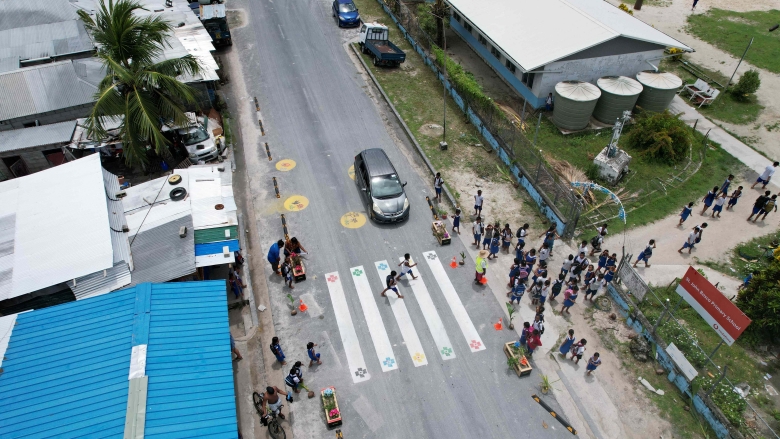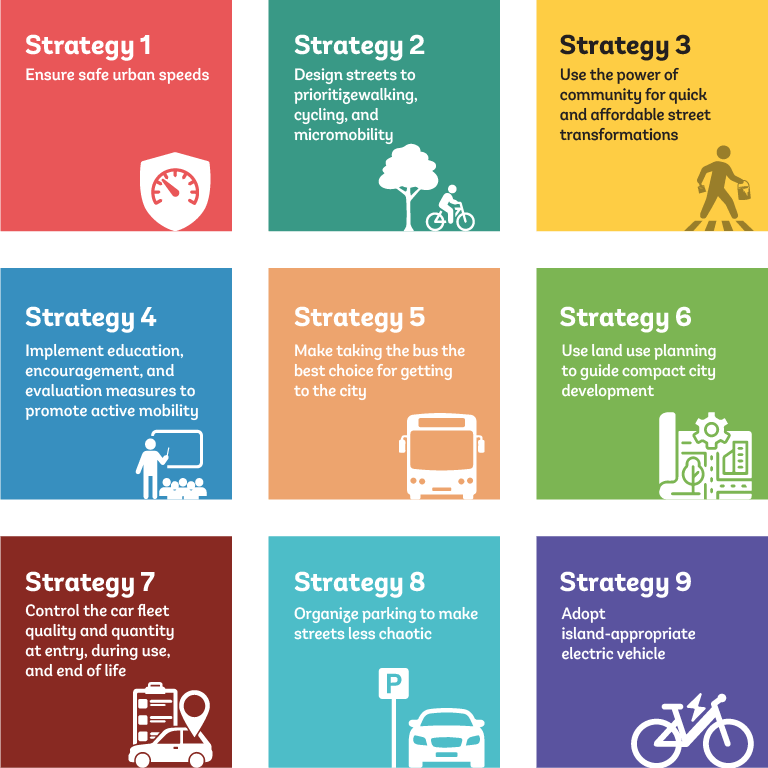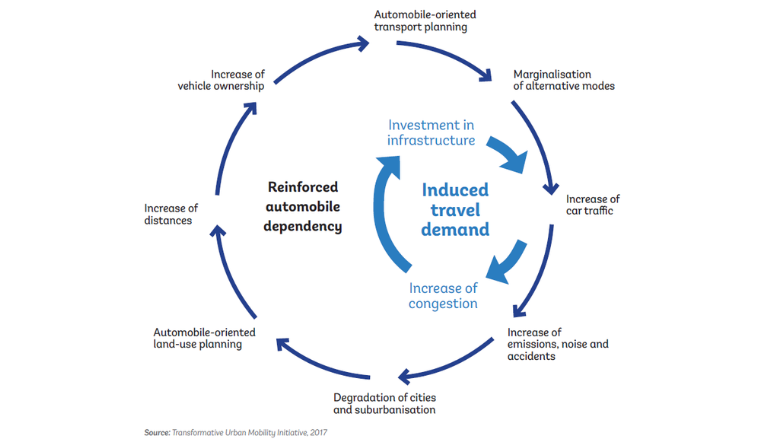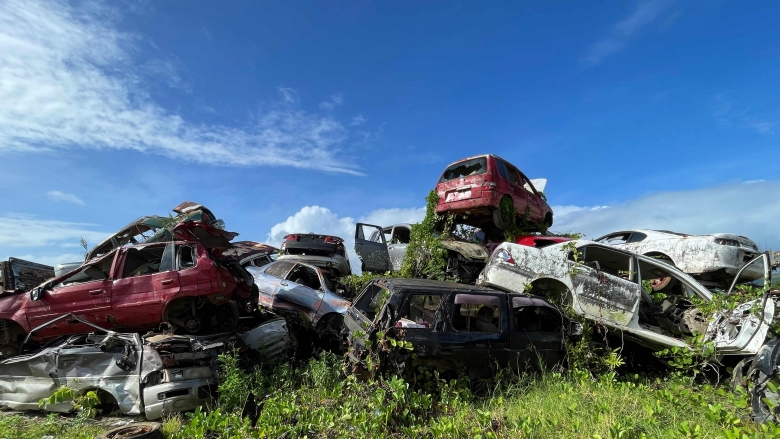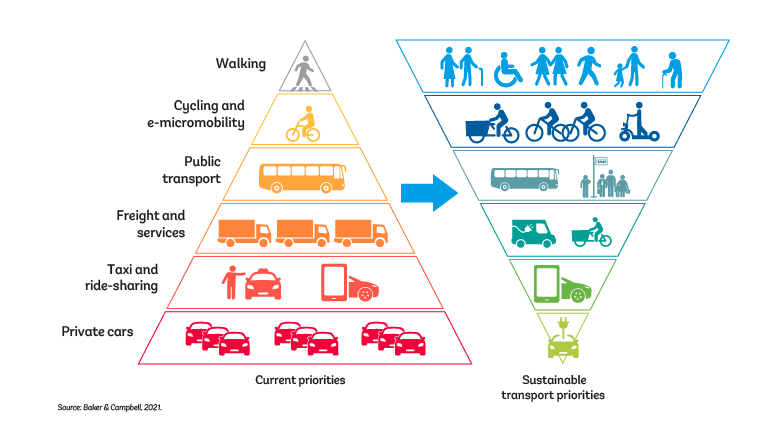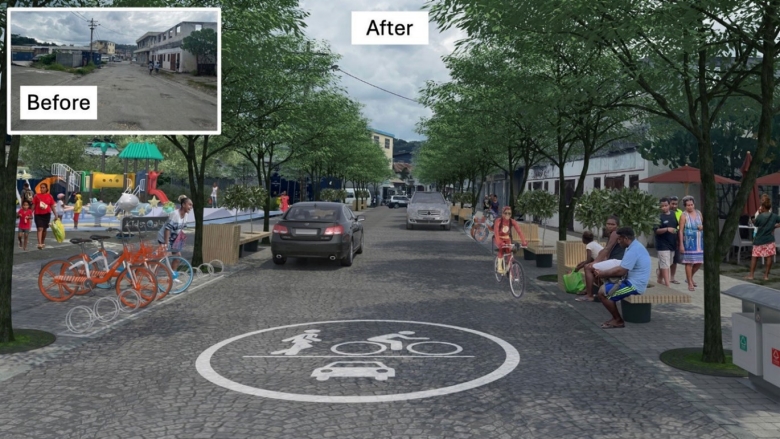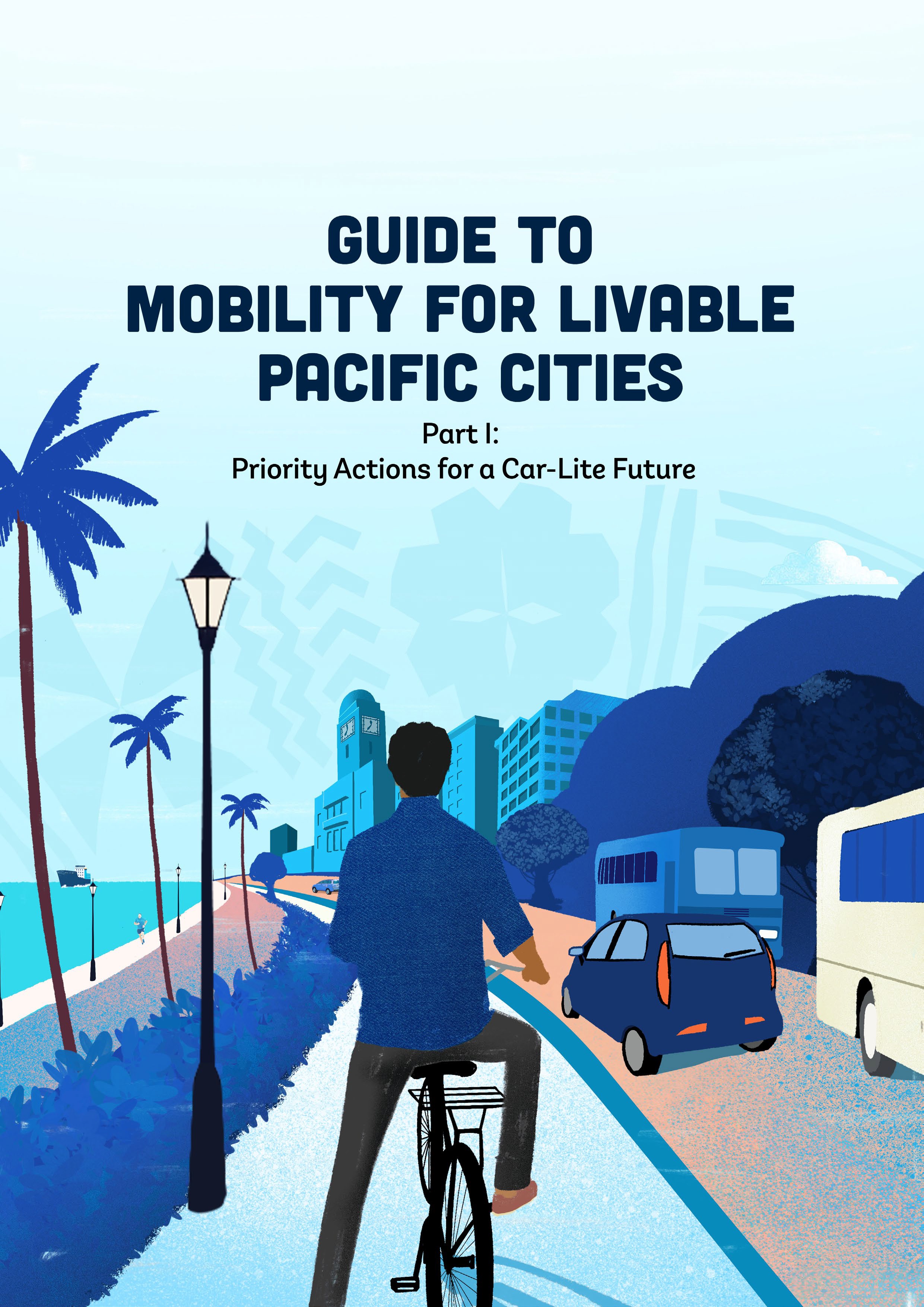 | Guide to Mobility for Livable Pacific CitiesPart I: Priority Actions for a Car-Lite FuturePart II: Practitioners' Handbook to Implement the Priority Actions |
In March 2024, the streets around Saint John Bosco Primary School, in Tarawa, Kiribati, got a makeover thanks to student volunteers and community helpers. In just four hours, students, teachers, and local leaders came together to add a crosswalk, narrow the road at the crossing, clear away debris, paint colorful murals on the road, plant coconut trees, and put up no-parking signs, to make the streets safer. The results were impressive: Traffic speed slowed down from 34.7 to 19.7 km/h, and the share of cars stopping and waiting for students to safely cross the road jumped from 9 percent to 81 percent. This transformation not only made walking to school safer for the two-thirds of students who walk every day, it also made the area more beautiful. Inspired by this success, the government of Kiribati and the World Bank are using these ideas to design safer, more vibrant streets on Kiritimati Island.
